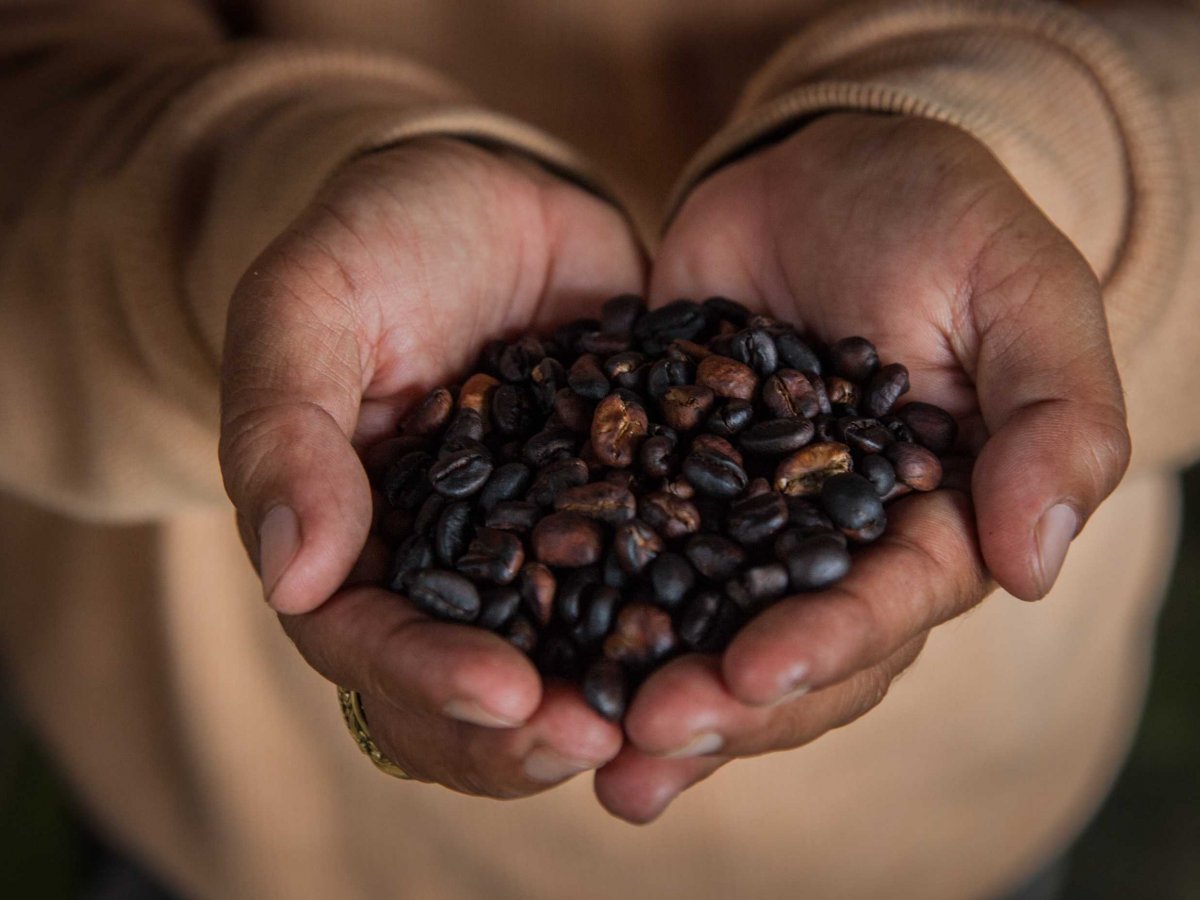Friedlieb Ferdinand Runge
☕The Godfather of Caffeine☕
Friedlieb Ferdinand Runge’s contributions to chemistry are often overlooked
By
Friedlieb Ferdinand Runge, who is celebrated in today’s Google doodle, was the discoverer of caffeine and the first person to isolate quinine, but his contribution to chemistry is often overlooked.
He also invented paper chromatography, a method for separating chemicals which is widely used in teaching labs.
Runge was born in Germany in 1794, the son of a pastor and the third of seven children. While working as an apprentice in his uncle’s pharmacy, he got a drop of henbane juice in his eye, and noticed that his pupil dilated. Based on experiments on a cat’s eye, he went on to write a dissertation on the toxic effects of atropine, a chemical found in plants like henbane and deadly nightshade. Atropine blocks receptors for the neurotransmitter acetylcholine which is released by the nervous system to activate muscles.
Runge studied chemistry at the University of Jena, Germany, under J. W. Döbereiner, an adviser to the writer Johann Wolfgang von Goethe. His fellow students called him “Dr Gift” – the German word for poison. Döbereiner arranged for Runge to perform a demonstration of atropine’s ability to make cats’ pupils dilate for Goethe. Goethe was suitably impressed, and at the end of their meeting he presented Runge with a packet of coffee beans, suggesting that their chemical components might be worth investigating. Runge studied the beans, and later that year, he discovered caffeine.
Runge studied chemistry at the University of Jena, Germany, under J. W. Döbereiner, an adviser to the writer Johann Wolfgang von Goethe. His fellow students called him “Dr Gift” – the German word for poison. Döbereiner arranged for Runge to perform a demonstration of atropine’s ability to make cats’ pupils dilate for Goethe. Goethe was suitably impressed, and at the end of their meeting he presented Runge with a packet of coffee beans, suggesting that their chemical components might be worth investigating. Runge studied the beans, and later that year, he discovered caffeine.
In 1819, while still a student, Runge made another remarkable discovery for which he is seldom credited, isolating quinine from cinchona bark. The discovery of quinine, the first effective antimalarial compound, is usually attributed to Pierre Joseph Pelletier and Joseph Bienaimé Caventou, who reported their work a year later.
At the time, students in Germany had to do their oral doctoral
examination in Latin, but Runge only went to elementary school and had
not learned any other languages. He got through the exam by blurting out
stock phrases such as “practica est multiplex” (practice is varied);
“post nubila phoebus” (after the clouds, the sun); and “errare est
humanum” (to err is human).
In his later years, Runge, a lifelong bachelor, directed his chemical
knowledge towards household problems, such as removing stains, making
wines from fruits, canning meats and vegetables, and showing off his
culinary skill at dinner parties.

Friedlieb Ferdinand Runge
Google Doodle

Google Doodle raises a cup of joe to Friedlieb Ferdinand Rungeby Steven Musil February 7, 2019
Google
hopes to generate a buzz about the German analytical chemist, who was
the first to identify caffeine as coffee's active ingredient.
You
can thank Friedlieb Ferdinand Runge for making some eye-opening
discoveries, including one that's an integral part of our lives 200
years later.
The
German analytical chemist began conducting chemical experiments at a
young age, identifying the pupil-dilating effects of belladonna when he
accidentally splashed a drop of the toxic perennial, also known as
deadly nightshade, into his eye.
But
a stimulating, 1819 discovery is the reason Google will be celebrating
Runge's 225th birthday Friday by way of an animated Doodle. For after
Runge demonstrated his belladonna discovery to Johann Wolfgang von
Goethe, he was encouraged to analyze the chemical makeup of coffee
beans, leading a few months later to the identification of caffeine as
its active ingredient.
Born
in Hamburg, Germany, on Feb. 8, 1794, Runge earned his doctorate degree
from the University of Berlin and went on to teach chemistry at the
University of Breslau until 1831, when he went to work for a chemical
company until 1852. His other work included the first coal tar dye
(aniline blue) and the first extraction of quinoline, which led to the
derivative quinine, a drug used to treat malaria.
Despite his contributions to chemistry, Runge died in poverty in 1867 at the age of 73

Source: https://www.google.com/doodles/friedl...
More about Runges biogaphy and works: https://en.wikipedia.org/wiki/Friedli...
More about blood (german): https://www.blutwert.net
More about my art and paintings: https://www.martin-missfeldt.de


Here is what Google wrote about this doodle:
"Today’sDoodle celebrates Friedlieb Ferdinand Runge, a German
analytical chemist whose place in history resulted in large part from an accident followed by a chance encounter.
Runge was born outside of Hamburg on this day in 1795. The son of a Lutheran pastor, he expressed interest in chemistry from an early age and began conducting experiments as a teenager.
During one such experiment, Runge accidentally splashed a drop of belladonna extract in his eye, taking note of its pupil-dilating effects. Ten years later, while studying under renown chemist and inventor Johann Wolfgang Döbereiner at the University of Jena, Runge was asked to reproduce belladonna’s effects s part of a demonstration for one of Döbereiner’s friends: the writer and polymath Johann Wolfgang von Goethe. Impressed by the 25-year-old chemist, Goethe handed Runge a bag of rare coffee beans and suggested he analyze their chemical makeup.
Shortly thereafter, Runge isolated the active ingredient we know today as caffeine!
After earning his doctorate from the University of Berlin, Runge went on to teach at the University of Breslau until 1831 when he left academia to take a position at a chemical company. During this time, he invented the first coal tar dye and a related process for dyeing clothes. His contributions to the world also include: being one of the first scientists to isolate quinine (a drug used to treat malaria), considered an originator of paper chromatography (an early technique for separating chemical substances), and even devising a method for extracting sugar from beet juice.
Here’s to Runge, without whom the pain of forgoing one’s morning cup of
coffee might never have had a scientific explanation!"
More about Runges biogaphy and works: https://en.wikipedia.org/wiki/Friedli...
More about blood (german): https://www.blutwert.net
More about my art and paintings: https://www.martin-missfeldt.de




No comments:
Post a Comment